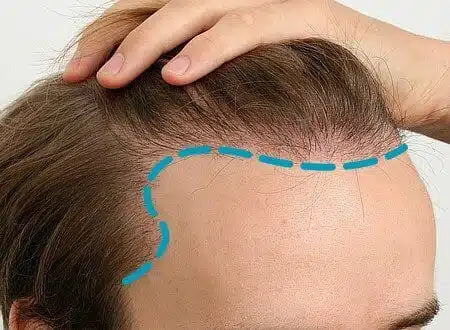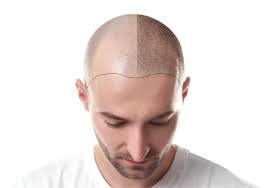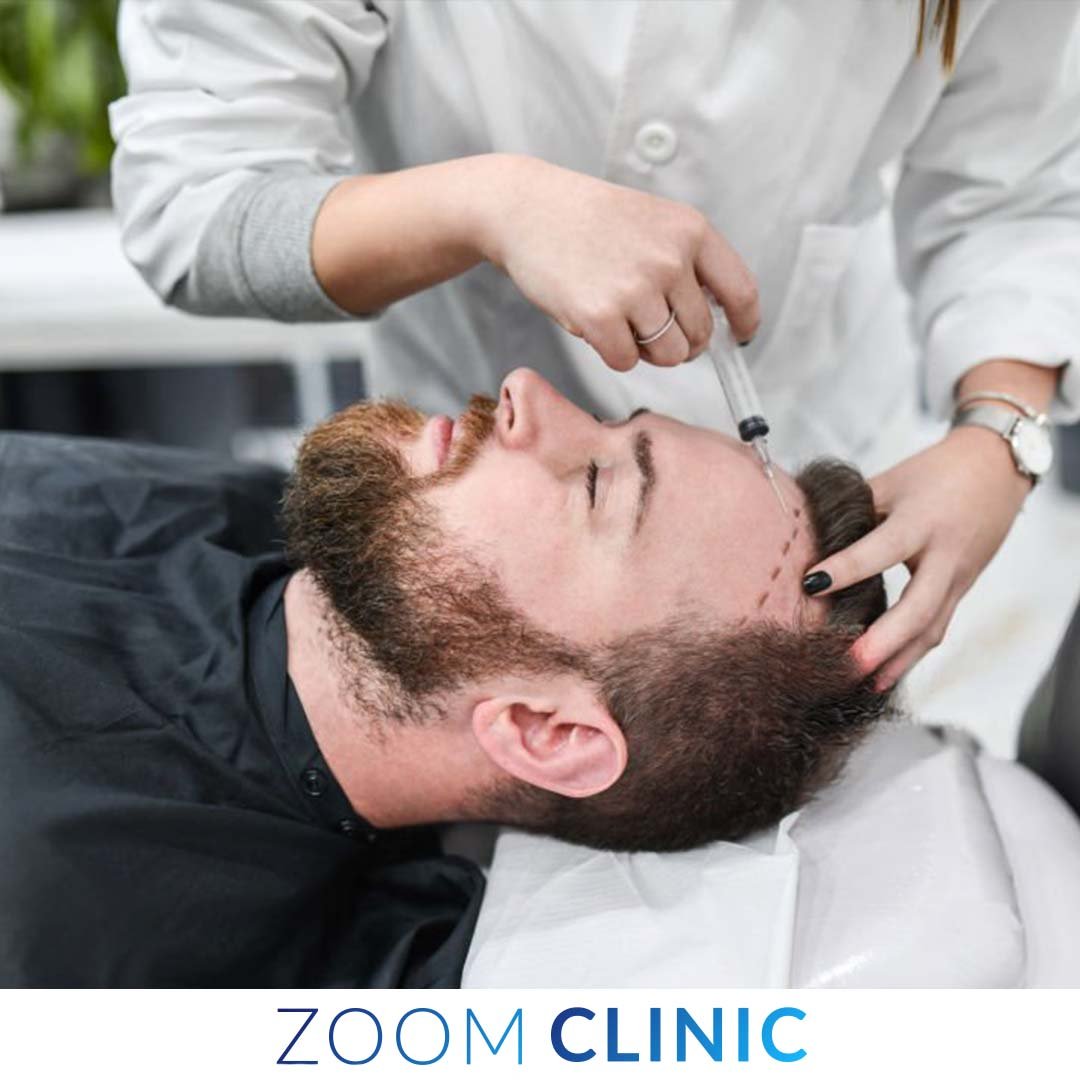Hair loss can be a distressing experience for many individuals, leading them to seek solutions like hair transplant surgery.
This comprehensive guide will walk you through the entire hair transplant journey, from the initial consultation to the completion of the procedure, helping you understand what to expect and how to achieve the best results.
Table of Content
Initial Consultation with a Medical Consultant
Understanding Hair Transplantation
Hair transplantation involves transferring hair follicles from a donor area, typically the back or sides of the scalp, to a recipient area experiencing hair loss.
The surgery can be done using two main techniques: Follicular Unit Extraction (FUE) and Follicular Unit Transplantation (FUT).
- FUE Hair Transplant Surgery: Individual hair follicles are extracted using a micro-punch tool and transplanted to the recipient area.
- FUT Hair Transplant Surgery: A strip of the scalp is removed from the donor area (donor site), and the hair follicles are dissected and transplanted to the recipient area.
The Initial Consultation

The initial consultation with a hair transplant surgeon is crucial. During this consultation, the surgeon will:
- Assess your hair loss pattern and hair density.
- Discuss your medical history and any underlying conditions.
- Explain the hair transplant procedure and the differences between FUE and FUT.
- Develop a personalized treatment plan based on your specific needs and goals.
Treatment Plan
Your treatment plan will outline the number of hair grafts needed, the expected timeline for the procedure, and the anticipated hair transplant results.
The surgeon will also provide pre-operative instructions to prepare for the surgery.
Preparing for Hair Transplant Surgery
Pre-Operative Instructions
To ensure the best possible outcome, follow the pre-operative instructions provided by your hair transplant clinic. These may include:
- Avoiding alcohol and smoking for at least a week before the surgery.
- Refraining from taking blood-thinning medications or supplements.
- Washing your hair thoroughly on the day of the surgery.
- Arrange for someone to drive you home after the procedure.
The Day of Surgery
On the day of your hair transplant surgery, you will be given local anesthesia to numb the donor and recipient areas. The procedure can take several hours, depending on how many hair grafts are transplanted.
The Hair Transplant Procedure (surgical procedure)
FUE Hair Transplant Surgery
During FUE hair transplant surgery, the surgeon will:
- Extract individual hair follicles from the donor area using a micro-punch tool.
- Make small incisions in the recipient area where the hair follicles will be transplanted.
- Carefully place each hair follicle into the incisions, ensuring a natural growth pattern.
FUT Hair Transplant Surgery
During FUT hair transplant surgery, the surgeon will:
- Remove a strip of scalp from the donor area.
- Dissect the strip into individual hair grafts.
- Make incisions in the recipient area and transplant the hair grafts.
(This method is considered old and not in use now)
Post-Operative Care

After the surgery, you receive post-operative care instructions to promote healing and ensure the best possible results. These instructions may include:
- Keeping your head elevated for the first few nights to reduce swelling.
- Avoid strenuous activities for at least a week.
- Following a specific hair wash routine to keep the transplanted area clean.
- Taking prescribed medications to prevent infection and manage pain.
The Hair Transplant Recovery Timeline
First Week Post-Op
During the first week after your hair transplant surgery, it’s normal to experience some redness, swelling, and scabbing in the donor and recipient areas.
Follow your surgeon’s post-op instructions carefully to promote healing.
First Month
In the first month, the transplanted hairs may begin to fall out. This is known as “shock hair loss” and is completely normal. The hair follicles enter a resting phase before new hair growth begins.
2-3 Months Post-Op
New hair growth typically starts around 2-3 months after the hair transplant. The hair strands start to emerge, and you may notice small, fine hairs appearing in the recipient area.
4-6 Months Post-Op
Between 4-6 months post-op, you will see more hair growth. The new hairs will continue growing and thickening, gradually blending with your existing hair.
9-12 Months Post-Op
At 9-12 months post-op, most patients will see significant improvement in hair density and coverage. The hair transplant results become more evident, and you can enjoy a fuller head of hair.
Final Results
The final results of your hair transplant surgery can be seen 12-18 months after the procedure. The transplanted hair will continue growing and thickening, providing a permanent solution to hair loss.
Factors Affecting Hair Transplant Results
Hair Growth Cycle
Understanding the hair growth cycle is essential for managing expectations. The hair growth cycle consists of three phases:
- Anagen Phase: The active growth phase, lasting 2-6 years.
- Catagen Phase: The transitional phase, lasting 2-3 weeks.
- Telogen Phase: The resting phase, lasting 2-3 months.
The transplanted hairs will go through these phases, so it takes time to see the final results.
Hair Density and Donor Area
The density of your hair and the donor area’s quality can impact the hair transplant’s success. Individuals with a higher hair density in the donor area may achieve better results.
Hair Loss Pattern
Your specific hair loss pattern will also influence the outcome of the hair transplant. The surgeon will consider this when designing your treatment plan to ensure natural-looking results.
Maintaining Your New Hair
Post-Operative Care
Following post-operative care instructions is crucial for maintaining the health of your newly transplanted hair. Follow your surgeon’s recommendations for hair washing, avoiding harsh treatments, and taking prescribed medications.
Regular Follow-Up Appointments
Attend regular follow-up appointments with your hair transplant clinic to monitor your progress and address concerns.
These appointments allow your surgeon to assess the growth of the transplanted hair and make any necessary adjustments to your treatment plan.
Managing Ongoing Hair Loss
If you have ongoing hair loss, your surgeon may recommend additional treatments to maintain your hair density. This could include medications, laser therapy, or future hair transplant procedures.
Conclusion
Embarking on a hair transplant journey can be a life-changing experience. It offers a permanent solution to hair loss and can restore your confidence.
Understanding the entire process, from consultation to completion, can help you make informed decisions and achieve the best possible results.
Key Takeaways
- Initial Consultation: Assess your hair loss pattern, discuss your goals, and develop a personalized treatment plan.
- Preparation: Follow pre-operative instructions to ensure a successful surgery.
- Hair Transplant Procedure: Understand the differences between FUE and FUT and what to expect during the surgery.
- Recovery Timeline: Be patient and follow post-operative care instructions to promote healing and achieve optimal results.
- Final Results: It takes 12-18 months to see the final results of your hair transplant.
- Maintaining Your New Hair: Follow post-operative care, attend follow-up appointments, and manage ongoing hair loss with additional treatments if necessary.
By following these guidelines and working with an experienced hair transplant surgeon, you can enjoy the benefits of a fuller, healthier head of hair and a successful hair transplant journey.
FAQs
1. How long does the hair transplant procedure take?
The duration of the hair transplant procedure varies based on the number of hair grafts needed. It typically takes several hours, and in some cases, it may require more than one session.
2. Is hair transplant surgery painful?
Hair transplant surgery is performed under local anesthesia, so you should not feel pain during the procedure. Some discomfort or soreness may occur during recovery, but this can be managed with prescribed medications.
3. When will I see the results of my hair transplant?
You can expect initial hair growth around 2-3 months post-op, with significant hair density and coverage improvement by 9-12 months. The final results are typically visible 12-18 months after the procedure.
4. Can women undergo hair transplant surgery?
Yes, women can undergo hair transplant surgery. The procedure is suitable for both men and women experiencing hair loss.
5. Are the results of a hair transplant permanent?
Yes, the results of a hair transplant are considered permanent. The transplanted hair follicles are resistant to the effects of male pattern baldness and will continue to grow throughout your life.
6. How many hair grafts do I need?
The number of hair grafts needed depends on the extent of your hair loss and your desired results. Your hair transplant surgeon will determine the number of grafts required during the initial consultation.
7. What should I avoid after hair transplant surgery?
After hair transplant surgery, avoid strenuous activities, swimming, and exposure to direct sunlight for at least a week. Follow your surgeon’s post-operative care instructions to ensure proper healing.
8. Can I wash my hair after a hair transplant?
Yes, you can wash your hair after a hair transplant, but follow the specific instructions provided by your surgeon. Typically, using a mild shampoo, you can gently wash your hair a few days after the procedure.
9. Will I need more than one hair transplant?
Some patients may require more than one hair transplant to achieve their desired results, especially if they have extensive hair loss or ongoing hair loss. Your surgeon will discuss the possibility of additional procedures during your consultation.
10. How do I choose the right hair transplant clinic?
To choose the right hair transplant clinic, research the clinic’s reputation, read patient reviews, and look for experienced surgeons—schedule consultations with multiple clinics to find the one that best meets your needs and goals.
Read Also:


